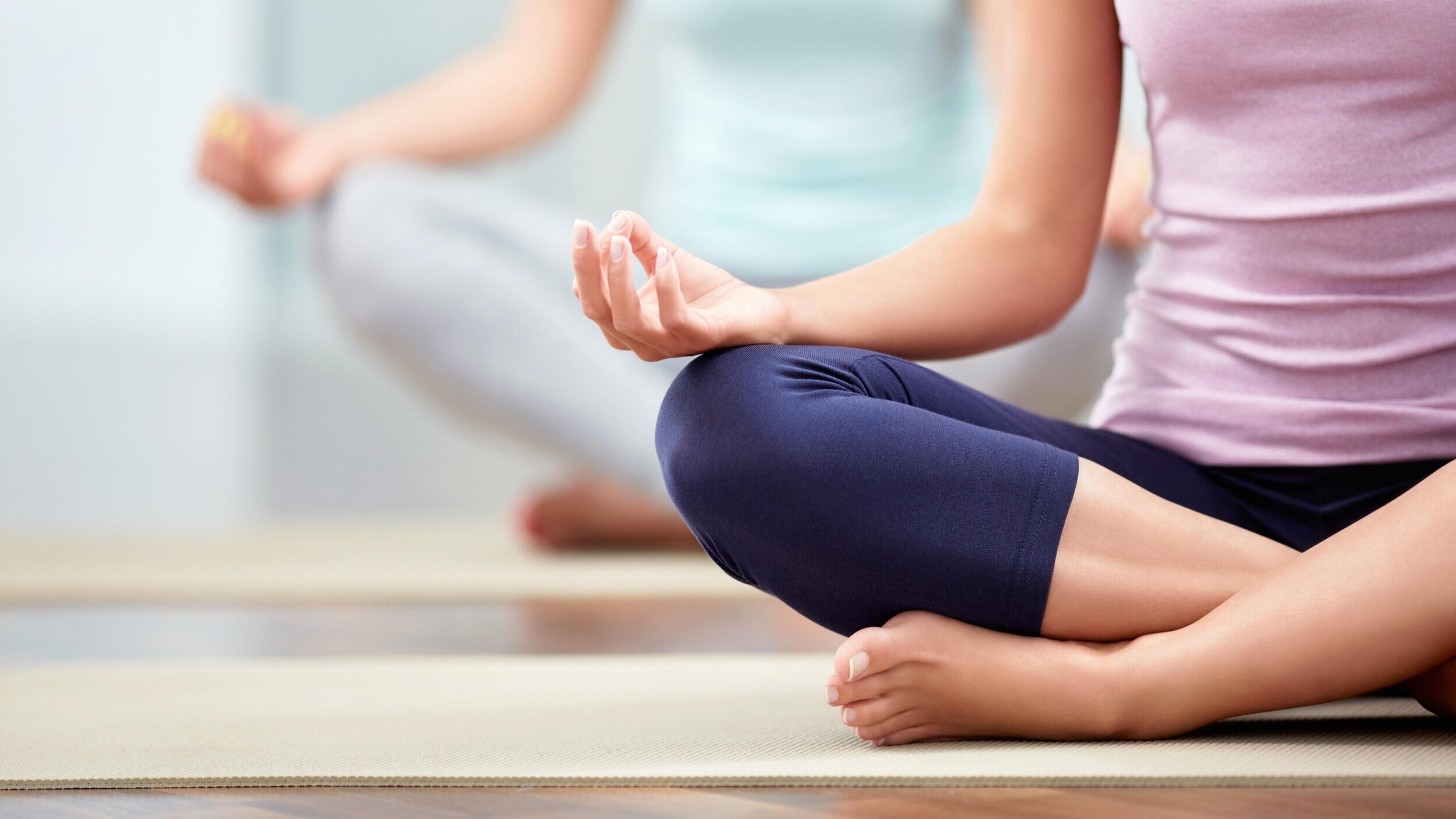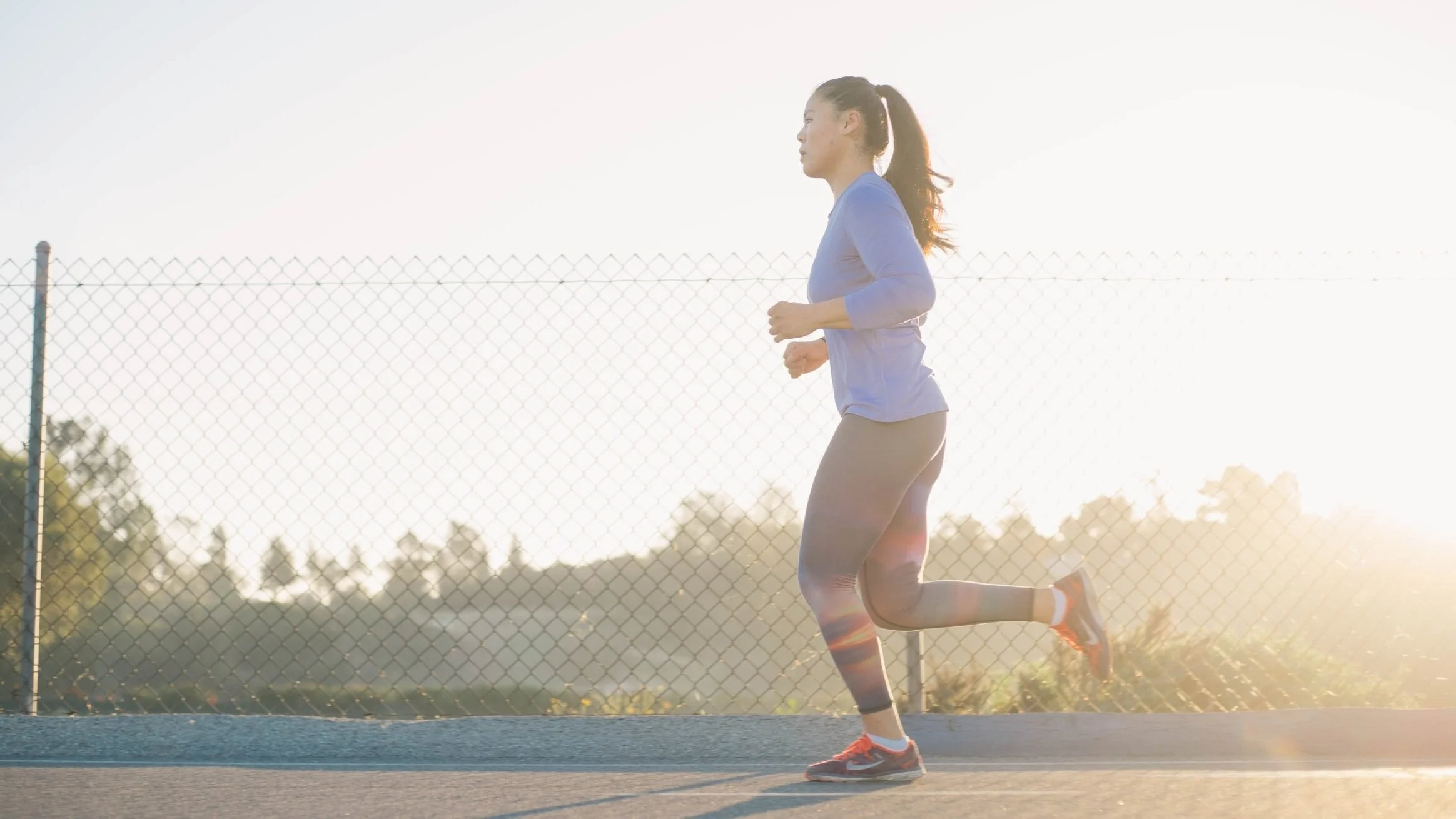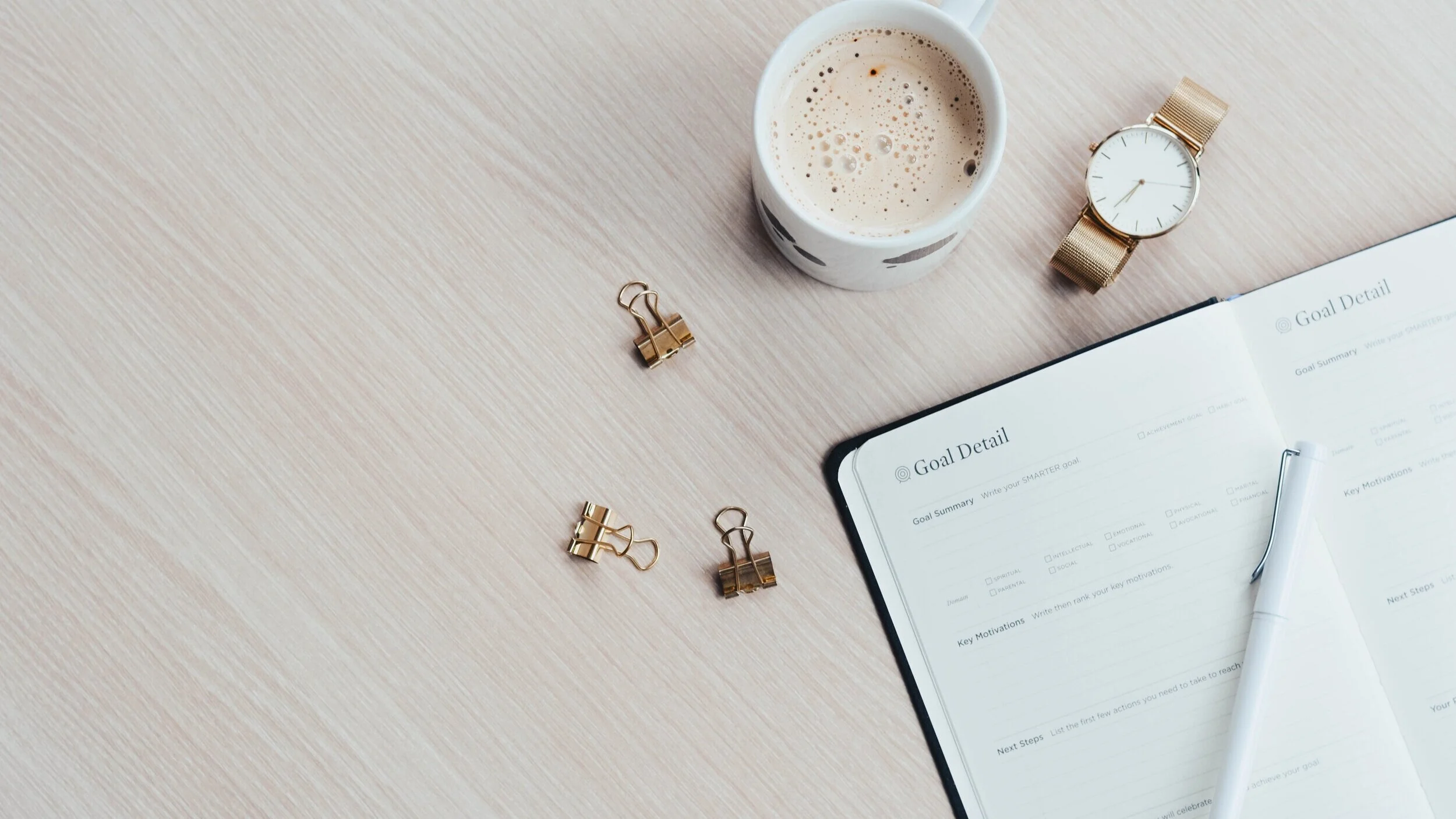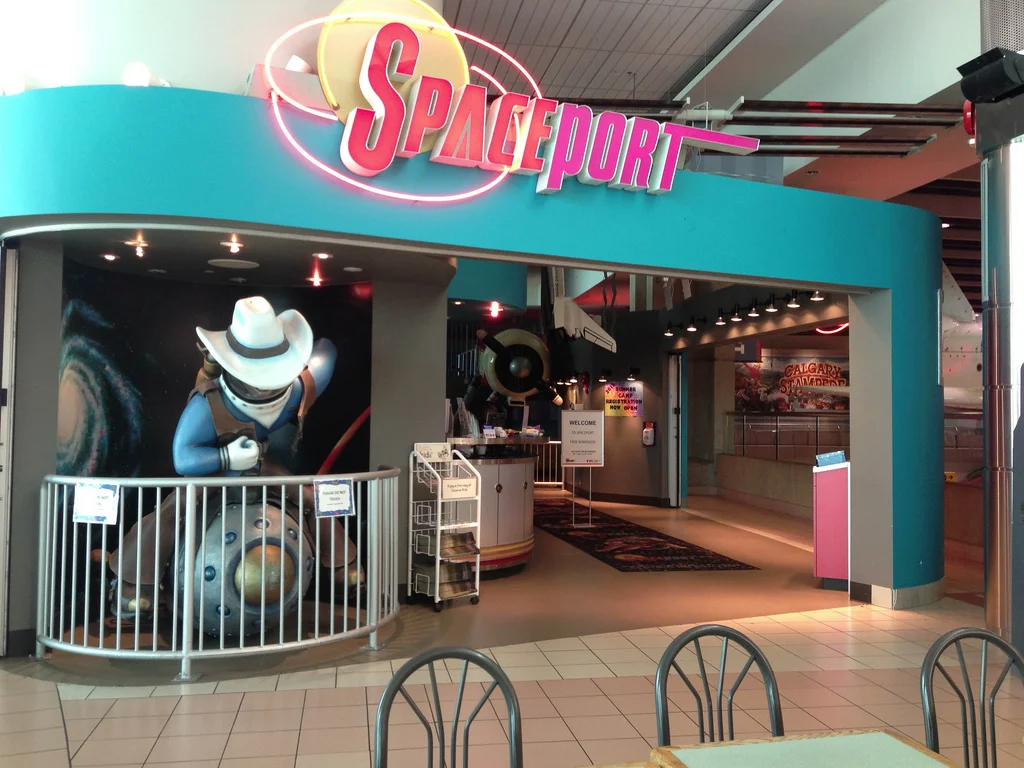Meditation For Beginners - Tips For Meditating In A Busy Place
Meditation is a great tool for managing stress and maintaining calm, especially when on the road. However it can be a difficult skill to master. Here are some tips to help you get started with your meditation practice, especially if you find yourself trying to practice in a busy place.
Meditation is a practice that uses mindfulness or focusing the mind on a particular thought or activity such as your breath, to achieve mental clarity and emotional stability. It is practiced as a part of many spiritual traditions around the world and has become a prominent fixture in the modern wellness culture. And this is not surprising, meditation and mindfulness has been proven time and again to have positive benefits on mental and physical health. It has been shown to improve focus and concentration, manage anxiety and stress, help you feel more grounded and connected to the world around you, help you sleep and so much more.
Taking some time for meditation is one of the recurring pieces of advice we (and lots of other travel wellness brands) suggest for managing stress while on the road. We even have some travel specific guided mediations in the Sanctifly app that you can follow while at the airport or on a flight. But meditation is a skill and though it may come easy to some, for many it requires learning and practice. So rather than just tell you to go and meditate, we wanted to share some tips to help make meditation easier, especially if you are a beginner.
The first step is take some time to prepare and plan and become acquainted with meditation. Deciding to try meditation for the first time while you are stuck in the middle of a busy airport may not be the best option and will not give you a proper insight into its benefits. Meditation requires practice. Sitting still and emptying your mind does not come easily. If you are completely new to meditation the first thing you need to do is to find the best type of meditation for you. There are hundreds of meditation types and techniques that come from different traditions and have different focuses and desired outcomes. Headspace gives a great breakdown of the different meditation types here.
For beginners, we recommend choosing guided meditations to help you stay focused and drown out external noise while practicing. There are several guided meditations available to Sanctifly members. You can find them in the ‘Sanctuary’ section of the app. Guided meditation will be especially helpful if you are practicing in a busy place such as an airport, but that comes later. Start at home. Practice sitting in silence and try to focus on your breath with no other distractions. Follow along with a guided meditation at home and start to make meditation a habit. Choose a set time a couple of days a week to sit in silence and meditate at home. This only needs to take ten minutes, it’s all about building the habit and becoming more familiar with the techniques. Practice makes perfect and if you only meditate when you are at the airport it is going to take a long time to build up the skill.
Once you become more familiar with meditation you can then take the practice on the road. The airport is often a busy and stressful place and taking a moment to relax, meditate and center your mind will help reduce that stress. Follow these tips to make meditating at the airport (or in any busy place) easier for you.
1. Find a quiet space.
Of course, in an airport, this is easier said than done. However even in a noisy and busy place, such as an airport terminal, there are some opportunities for finding quiet. Check out this post on ‘Finding Sanctuary: How to find quiet space at any airport.’
2. Remove distractions.
Removing as many distractions as possible will help you in your meditation practice. Turn your phone off or on silent. Pack noise cancelling headphones so you can drown out any background noise. Creating as quiet and peaceful an environment as possible will help you to focus.
3. Sit comfortably.
Simply sitting upright in a chair will work. You do not need to be sitting cross legged on the floor to meditate. Take the time before you start to get as comfortable as possible, make sure you are warm and hydrated. By making yourself as comfortable as possible you remove the possibility of distracting thoughts and allow yourself to become more focused on your meditation.
4. Ground yourself.
Being present and grounded in the moment is essential for meditation. Sit with your feet on the floor and practice the 5-4-3-2-1 grounding technique to help quiet your thoughts and bring your attention to the moment. First list 5 things you can see, then four things you can touch, three things you can hear, two things you can smell and 1 thing you can taste. Mindfulness expert, Jay Shetty describes the technique in more detail in this interview.
5. Always come back to your breath.
Make your breath the focal point of your attention. And don’t be too hard on yourself. If your thoughts start to wander gently bring them back to the breath. Remember, even the most well practiced meditation experts can have off days.
6. Follow a guided meditation.
A guided meditation will help you to stay focused. It will also help to drown out background noise and gives you a definite time for your practice.
The next time you need to meditate in a busy place, or if you are just starting out on your meditation journey, follow these steps to help make the most of your practice. Meditation is a fantastic tool to help manage stress levels. Whether you are traveling or staying home during these strange times, building a meditation habit into your daily routine will be beneficial for your mental wellbeing. The most important thing is to remember is that meditation should not be a chore. It can take no longer than ten minutes and does not require any fancy equipment or subscriptions.
Download the app today to explore our content and start building your healthy habits at home with Sanctifly.
Sign up to the Sanctifly Travel Wellness Newsletter for monthly tips and information on the travel industry and how you can stay safe and healthy in the post Covid-19 world.
For more information on our membership types, click here.
How To Build Healthy Habits At Home And On The Road
Building healthy habits is vital for maintaining your health and wellness. Without proper routine, falling into bad habits becomes all too easy, especially when on the road. In this article we dive into what a habit is and when makes a habit last. Learn tips and hacks on how to build healthy habits that stick. Start building these habits now so you can take them on the road in the future.
A habit is a routine of behaviour that is repeated regularly and tends to occur subconsciously. It is difficult to give up and therefore becomes an ingrained part of our lives. When talking about habits, we often hear people talking about bad habits. That’s no surprise, we love to talk about the negative and skim over the positive and when most people think about habits, they think about breaking bad ones. But building and maintaining good habits is just as important as breaking those bad ones and building good habits is especially important if we want to stay fit and healthy. If we work toward creating good habits that focus on fitness, healthy eating and our mental health, then maintaining these routines will become like second nature to us and in return; it will be much easier to stay healthy.
Travel is a great disrupter of routine and can cause normally healthy people to practice some pretty bad habits. Being away from home and our regular routine can make it all too easy to say yes to bad food, lack of exercise and excise of things we manage better when at home. At Sanctifly, one of our core missions is to help frequent travelers build healthy habit so that being on the road does not affect their health and wellness. Building those healthy habits always starts at home. While it may take more effort and more planning to continue with those healthy habits while on the road, starting off with that base of familiarity makes it so much easier. We know not many are traveling right now but we will travel again and when we do, health and wellness will be even more of a priority. Now is a great opportunity to start building those healthy habits at home so that you can easily take them on the road when travel resumes.
How do habits work?
By understanding the structure of habits and the way habits are created and broken, we can better understand how to create and stick to healthy ones. According to Charles Duhigg, author of The Power of Habits, habits can be broken down into the following categories:
The Cue – This is a trigger that predicts some kind of reward. These can be internal or external that signals to your brain that it is time to exercise the habit.
The Craving – The desire to act in order to receive the reward
The Response – This is where you complete an action that can be described as the habit.
The Reward – This is where your brain receives some kind of reward for completing the action. The reward satisfies the craving and becomes associated with the cue, therefore developing the habit.
What makes habits to difficult to build and break is that these processes are subconscious. We do not actively say ‘I am craving this reward’ or ‘I need to do this in order to get the reward’. Our minds process this information so fast it can seem impossible to pinpoint each category and make positive changes. However, by understanding this structure, we can take an outside view of our own habits and intellectually breakdown how they are formed. We can identify common triggers and work to avoid them and identify rewards and work to build better habits that provide them.
That’s all well and good for breaking bad habits (which is definitely a must for most frequent travelers!) but what about building new ones? This post is all about building healthy habits now, while we are at home, that you can take with you on the road when travel resumes. So, before we get into some examples of good, healthy habits that work for home and travel, here are some expert tips on how to create and make them stick..
Tips for making habits stick
Make a habit stack
Habit stacks are great ways to create new habits by building on one’s you already have. Choose a habit that you already have and incorporate the new habit before or after it. This will make it easier to stick to the new habit because it is associated with something you already do without thinking. For example, if you wanted to get into the habit of drinking more water, you could create a habit stack with your morning coffee. I.e. When I pour my morning coffee I will also pour a glass of water.
Know your why
Get ahead of your excuses by knowing the WHY behind your effort to create a new habit. This may sound trivial, but in those moments of doubt or when the excuses tend to pop up, your WHY will direct you back to the reason and mindset for choosing this healthier lifestyle and path. Really work to understand why you want this new habit to be part of your life and, when things get hard, remind yourself of that reason.
Make your goals small and achievable
One of the main reasons we fail when we try to incorporate improvements into our lives is because we set our goals too high and become disheartened with the lack of progress. Having a clear end goal to work toward is important, but you should also set smaller, more achievable goals so you can feel like you have achieved something along the way.
Record your progress
It’s takes an average of 66 days for a new behaviour to become automatic. This is why it is so important to build your healthy habits at home and not while you travel. At home, you can be consistent and take action every day and truly create a lasting habit. Then, when you are traveling, the habit will be sore ingrained you won’t even have to think about doing it. Recording your progress so you can track how many days you have performed to habit and how many days you take off will give you a sense of how close you are to creating the habit.
Examples of healthy habits that will help you when you return to travel
Get outside and go for a walk every day
Lack of exercise is a huge issue for frequent travelers. Busy schedules, disrupted routine and unfamiliar surroundings do not create the best environment for working out. If you work to build the habit of going for a walk every day, you won’t be able to live without it when on the road and you will automatically get some exercise while you are away from home.
Create a sleep routine
Getting good sleep is another common problem that troubles frequent travelers. Again, busy schedules, disrupted routine and unfamiliar surroundings are to blame. If you get in the habit of a sleep routine at home, this can help to settle you into sleep while on the road. Choose a couple of actions (that don’t involve looking at your phone!) and do them every night before bed. These could be stretching, reading or mediating, for example. When you perform this routine while on the road it will subconsciously tell you body and mind that it is time to sleep and help you to wind down.
Stimulate your mind
Travel is incredibly stimulating for the mind. When we travel to new places we are forced to deal with new surroundings, new cultures and new languages. Navigating these unfamiliar situations helps to keep our minds sharp and in focus. For frequent travelers that are suddenly grounded, this can be a shock. If we get into too comfortable a routine while at home, returning to travel will be mentally draining. Work to create a daily habit of stimulating your mind so you are more prepared for getting back on the road. This could be reading or writing every day or perhaps using this downtime to learn a new skill.
Meal prep
A great benefit of being home more is that we get to cook our meals fresh each day and therefore get more variety in our nutrition. For many this has meant there is no need for meal prepping. This could cause problems when we return to travel. If we are not in the habit of meal prepping, we will not dedicate the time to prep lunches and snacks for when we travel. We will then be forced to eat food provided at the airport and on the plane (a lot of which is not very good for us). Try to meal prep a couple of times a week so you get back into the habit of making lunches.
Sanctifly is here to help frequent travelers make the most of their airport downtime and build healthy travel habits. We help travelers maintain their healthy routines while on the road by providing access to healthy activities, such as gyms, pools and spas all over the world. With so many frequent travelers still grounded, we have been working hard to help you build those healthy habits at home. We have added lots of new wellness content to the Sanctifly app. There are lots of healthy tips, fitness routines, nutritional advice and more, all available on the Sanctifly app today.
Download the app today to explore our content and start building your healthy habits at home with Sanctifly.
Sign up to the Sanctifly Travel Wellness Newsletter for monthly tips and information on the travel industry and how you can stay safe and healthy in the post Covid-19 world.
For more information on our membership types, click here.
Quick and easy travel friendly exercise routine. No equipment needed!
Quick and easy workout routine to use next time you are traveling. 12 easy workouts with no equipment needed!
Make your airport downtime work for you with this easy to follow, no equipment needed workout routine. Take ten minutes while waiting for your flight to work out and stay healthy.
It doesn’t matter if you are an avid gym user or more casual about fitness, getting up and moving your body requires effort. A huge component in maintaining a consistent fitness habit is routine. We schedule in gym time or a walk or a swim into our week and because it’s on the calendar it is much easier to go do it. Traveling throws that whole system out of sync. When we travel we are plucked from our regular routine and thrown out of our comfort zone. Even for seasoned travelers, a new airport or an unfamiliar flight time is a whole new learning experience. And what happens when we are unfamiliar with our surroundings? All the effort that was used last week to head to the gym for a workout is spent navigating a new airport or trying to stay awake and alert to catch that late-night flight. And, as a result, we often take the easy option when it comes to our airport downtime. We sit by our gate or we go to the bar and we convince ourselves that it’s OK because we are at the airport.
No more excuses!
We deserve better! Air travel and airports still have a long way to go before they wake up to the health and well-being needs of their travelers. Next time you are at the airport, take a look around. How many unhealthy options can you see?
Don’t wait for change. Make changes for yourself.
Airports are slowly making changes with many bigger and busier airports introducing health and fitness options such as yoga rooms and spas post-security. But until it becomes the norm we need to take matters into our own hands. Here is an easy to follow, no equipment needed (and very little space!) workout routine that you can follow to help make the most of your airport downtime. No need for fancy equipment, all you need is ten minutes and your own body weight!
1. 60 secs. Squat, plank and two pushups. Modify the pushup with your knees down.
2. 30 secs. Mountain climbers. Modify to your own pace. Don’t overwork yourself, aim to complete the full work out!
3. 30 secs. Plank shoulder taps. Modify with your knees down for a less intense workout.
4. 30 secs. Alternating lunge twists.
REST. YAY! You’re halfway there! Here is a top tip for working out at airports. Unused gates are often the best source of space post security. If you are willing to walk, head for one that’s far from the shops and restaurants as these tend to be deserted.
5. 60 secs. Squat, sidestep and two pushups. Modify the pushup with your knees down.
6. 30 secs. Plank to side plank twists. Modify with your knees down.
7. 60 secs. Squat jumps. Modify to your pace.
8. 30 secs x2. Forearm side plank pulls, right arm then left arm.
9. 20 secs. Forearm plank hold.
10. 30 secs. Alternating leg cross crunch. Modify by placing your forearms on the ground.
11. 30 secs x2. Single leg lifts, alternating left and right.
12. Seated spinal twists. Finish your workout with a good stretch.
Here’s another top tip for staying healthy while traveling! Get out of the airport! If you have a long layover use the time to get out of the airport and get active in nature. Research the closest running or walking trail or park and spend your time outside rather than stuck in the airport. Just make sure you leave more than enough time to get back to the airport and through security.
Change your travel habits today.
Traveling doesn’t have to mean being sedentary. If we change the way we view airport downtime we can improve our habits for the better and make frequent travel less of a burden on our bodies and minds.
Start improving your travel habits today with Sanctifly, the global provider of wellness options and activities in and around airports. Get exclusive access to airport hotel gyms, pools and spas without booking a room, plus access to hundreds of airport lounges with showers. Get your membership today for as little as $99. Visit https://www.sanctifly.club/membership-types to get your membership today.
What to do on your Calgary Layover
Have you got an upcoming layover in Calgary? Learn everything you could ever want to know about space and aeronautics right in the airport! Or, if you have 6+ hours head into town and experience some of Canada’s charm. Get all the information you need for your next layover in Calgary in the Sanctifly Travel Wellness Blog.
Smart Choices for the Healthy Traveler
SUGGESTIONS FOR YOUR YYC LAYOVER
We are creating a series of “things to do” at each airport. This is to help you use your layover as wisely as possible. We can’t always help that we are held up at an airport but if we can take advantage of the time we have there, then we hope you find the following suggestions useful:
Don’t forget how flexible your membership to the Sanctifly gym, swimming or spa is. You can use it for an hour or more to suit the time you have available. You can get single use membership or come onboard for full corporate membership for your business.
1 Hour
INTERNATIONAL SPACEPORT
If you have an interest in space travel head over to the Calgary International SpacePort. They are located in the airport, and admission is free. They are an educational and entertainment facility focusing on space and aeronautics. There are hands-on exhibits and displays and they showcase the latest computer and communication technology.
2-3 Hours
PATHWAY SYSTEM
Stretch your legs and get some fresh air by heading to the Calgary Pathway System for a stroll. Calgary communities, parks and natural areas are connected by an extensive network of multi-use pathways available for all to enjoy. There are approximately 850 km of regional pathways and 95 km of trails.
FLIGHT MUSEUM
If you want to learn more about flight and aeronautics check out the Hangar Flight Museum. It showcases the history of aviation in Western Canada. It’s a constantly growing museum whose mission is to foster the understanding and appreciation of the evolution of flight through stories told about airplanes, helicopters, and the men and women who designed and flew them. The collection holds rare and historically significant military and civilian aircraft.
4+ Hours
LAZY DAY RAFTING
Take a lazy few hours and relax with Lazy Day Raft Rentals. Lazy Day Raft Rentals is a self guided tour down the Bow river in Calgary. They give you everything you need to float through parks and neighbourhoods on the lazy river. They are located opposite Princes Island Park, and you can choose from a 2 hour float to 4 hours. Bring a snack and sit back and enjoy.
ADULT PLAYGROUND
If you need something more active and want to blow off some steam check out Injanation, Calgary’s playground for kids and adults of all ages. Enjoy 55,000 square feet of high flying trampolines, ninja warrior courses, climbing, obstacles, and more. It is one of Calgary's largest trampoline parks with dodgeball courts, foam pits, and a high performance area. Test out our two ninja warrior courses and see if you've got what it takes to be on the next American Ninja Warrior.
ROCKIES TRAIL RIDE
If you enjoy horses or bonding with an animal on a trail ride, head to the Trail Riders of the Canadian Rockies. The Trail Riders of the Canadian Rockies is an experienced non-profit registered society celebrating 95 years of taking people from all over the world into the backcountry of Canada's Rocky Mountains. Riding experience ranges from beginners to the experienced and they can accommodate everyone’s abilities.
ARCHERY
Test out your aim by visiting Calgary’s Archery Games. Archery Games is the very first indoor archery tag facility in Calgary Alberta. Teams of 3-10 battle it out in the indoor archery arena. This could be a fun way to spend time with your coworkers or meet new people.
Thanks so much for reading and feel free to send any suggestions you may have to be added to this list.
Sanctifly is our number one recommendation at every airport. Become a full member now and enjoy the benefits today!





























